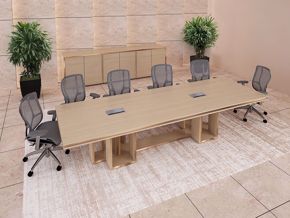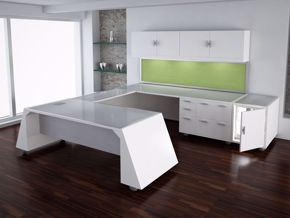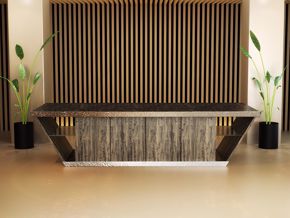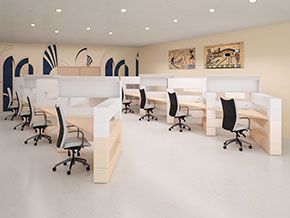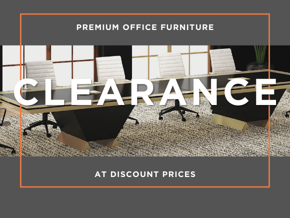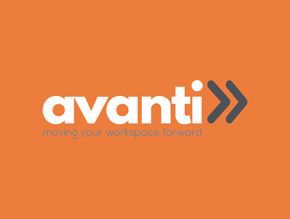Whether you’ve given it much thought or not, there are several things you probably want from your office furniture. The materials that your furniture is made from have everything to do with that selection. Choosing the best materials for your application will take you halfway to a great furniture choice.
Things you want your office furniture to deliver:
- These days, most people are looking for office furniture with a modern flair. That means it has to look good, be eye-catching, and remain relevant to the times.
- Another important consideration is that your furniture must represent your company image well. Your selection of material can make or break that image.
- Furniture durability relates to how long your furniture will continue looking good according to planned usage. If your material selection doesn’t match your intended use, location, and placement, before long, your furniture will appear undesirable. Soon after, you’ll be spending big bucks for a replacement.
- Compliance with appropriate maintenance is another essential factor. Accounting for office furniture upkeep ahead of time is always a worthy goal in terms of selection.
- If matching a specific color is important to you—possibly to match a logo or room design—the material you choose will dictate how close you’ll get to your desired hue, tint, or tone.
- Lastly, and perhaps most importantly, is what’s under the surface that matters. The quality of your furniture is only as strong as the materials used in its construction. Suppose your core material has a propensity to break away, split, chip, swell, or dislodge fasteners. In that case, all your efforts in selecting the perfect external materials will have limited relevance.
Cool! Dope! Sick! Modern office furniture materials to match your creative spirit
At 90 Degree Office Concepts, it’s important to us to keep the spirit of creativity alive. One of the many ways we have chosen to accomplish this is through our extensive selection of materials. This approach puts an unimaginable number of choices at your fingertips. Each selection offers something different from the next, which helps you release limited thinking and enter a world of what is truly possible. Here are a few of the options you’ll find with us:
- Basic High-Pressure Laminate
- Solid Core Laminate
- Designer Laminate
- Basic Wood Veneer
- Exotic Wood Veneer
- Solid Wood
- Painted Lacquer
- Metals
- Glass
- Painted Glass
- Natural Stone
- Manmade Stone
- Stone Laminate
- Compressed Straw
- Acrylic
- Bamboo
- Richlite/Phenolic
All of our materials offer a unique textural and visual experience for the user. At the same time, no material can deliver everything to everyone. While one material might be great visually, it could also be too costly in terms of budget. A material could suit your budget just fine but fail to deliver the visual you are seeking. A material might be the perfect color but a bit too fragile for your chosen location or application….and the list goes on.
When selecting the best materials for your modern office furniture, you will want to think about what you need from the material. Consider its location. For example, some materials are best used on vertical surfaces rather than horizontal ones. Consider the visual impact you want. A prefinished material may not offer the same effect as a custom color. Some materials cost more than others, so contemplate your maximum budget. In addition to direct cost, some materials must be fabricated (stone) and others finished (wood). This will add extra cost.
In the next section, we will look at the advantages and disadvantages of some of our most popular materials:
1. High-Pressure Laminate
HPL is made of several layers of kraft paper blended with phenolic resin. Color and/or printed paper is applied on top of kraft paper, then pressed together with extreme pressure and heat. This process transforms the paper and resin into thin, rigid, plastic-like sheets.
When laminated onto a substrate like wood, HPL forms a robust, durable product that can be used on modern office furniture faces and surfaces. It comes in many colors, patterns, and textures, making design applications exceptionally diversified and affordable.
Considerations
Because HPL is thin and rigid, when unprotected corners, edges, and toe-kicks are kicked, bumped, or banged, your furniture could become chipped, cracked, or broken. Wherever possible, avoid exposing raw edges, corners, and toe kicks. Another thing to consider when employing HPL in your modern office furniture is that the brown phenolic edge is visible from the side view.
2. Solid Core Laminate
Solid core laminate is the same color through and through. A significant advantage of this product in your modern office furniture is that your furniture won’t have brown edges or corner lines on exposed edges. Your furniture will appear to be of one piece. Because it is layered the same color through and through, if one layer should wear, the next layer will take its place. The thickness produced is also significantly more significant, creating a seamless effect that is tougher against visible scratches and chips.
Considerations
While this material does belong to the laminate family, the price is considerably greater. Also, though HPL comes in a seemingly endless array of colors, fewer colors are available in the solid core laminate category.
3. Designer Laminates
Designer laminates are created from the best patterns available in the world, offering a fresh collection of contemporary designs and colors for your modern office furniture. The array ranges from wood and abstracts to solid colors. These laminates have the same durability (or better) as top laminates, extending greater design flexibility.
- High gloss offers a smooth, mirror-like reflection.
- Leather offers a smooth, leather-like look and feel.
- Linen is a whimsical, textured, low-gloss finish.
- Natural wood grain emulates natural wood in a matte finish.
- Textured is a non-reflective matte finish offering a subtle texture.
- Microline is a slightly textured, low-line finish.
- Pearl is a mid-range gloss with a subtle texture.
- Rift wood has a slight wood-grain texture.
- Suede is a laminate that emulates suede.
- Textile, in some respects, emulates fabric.
Considerations
While designer laminates do belong to the laminate family, the price is considerably greater. In most cases, however, laminate materials represent a small percentage of overall office furniture cost.
4. Basic Wood Veneer
Maple wood veneer is a beautiful material that is a step up from laminate. Unlike laminate, maple wood veneer is a natural material. It’s a product (for those who don’t know) of the maple tree. The color of the wood can range from creamy white to light yellow and sometimes a little pinkish. Just as natural color can vary from tree to tree, so too can grain and characteristics. Unlike laminate, in which every pattern falls in a specific place, the beauty of wood veneer is in its unstructured character. No two trees are exactly the same. The logs used to create maple wood veneer are sliced into thin sheets and laid onto substrates boards. At 90 DOC, much of our office furniture is constructed first, then the wood veneer is applied after construction. This process takes more time, but it enhances the look of the furniture and avoids the choppy effect found in most furniture made up of many parts.
Because it’s natural raw wood we are working with, it needs to be sanded smooth, then stained. Sanded again, toned, sanded again, then sealed and coated many times for protection, with additional sanding taking place between each coat. These clear coats allow you to enjoy the furniture in your modern office without fear of damaging it within the parameters of everyday use.
Another benefit of working with wood, such as maple, is its natural pale colors, which can be stained with an array of hues. In most cases, we can even match existing colors in your current workspace if you desire. Maple is one of the more elegant price-friendly wood species available.
Considerations
Natural wood is a bit softer and can’t withstand the rigorous use that laminate can. While using your modern wood veneer office furniture, we recommend being somewhat protective of it. Don’t put hard or coarse objects on the furniture, and don’t write on a single sheet of paper on your desk or tabletop. Wood veneer is often more costly than laminates. The materials and labor involved in finishing will add extra costs to the final product.
5. Exotic Wood Veneers
Exotic wood veneers are stunning, rare, and imbued with character. The term exotic is used because most of the wood species that fit into this category are grown outside the geographical area of the northern hemisphere. Limited supply only adds to their rarity. For example, veneers made from Macassar Ebony come from trees that grow in India, the Philippines, and Indonesia. This species is becoming rarer by the day. Anigre is another example of a very desirable species. It grows primarily in Angola, Congo, and Cameroon, in addition to Kenya and Uganda. Like other exotic species, Anigre is now in short supply. Selecting these veneers for your modern office furniture will put you in rare company.
Considerations
There’s not much to add about exotic veneers other than price. They can be costly, and there may be a wait involved.
6. Solid Wood Office Furniture
It’s easy to understand that the most significant benefit of solid wood office furniture is its lasting durability. It will last for generations and save you on replacement costs. The natural character of wood results in a unique piece of furniture—something you will not see in another type of material. Suppose you are looking for furniture that connects you with the great outdoors. In that case, solid wood furniture can offer up that experience. It adds an emotional warmth to your office. With sanding and refinishing, you can repair damages and change the look of your furniture. Lastly, it is environmentally friendly.
Considerations
In a modern office environment rarely does one have the need to keep furniture forever. Typically, most modern offices update the look of their workplace every five to seven years. Spending additional dollars on a lifetime investment that won’t be used that long is a business decision. Over time, heat and cold cause wood to expand and contract, affecting the integrity of the furniture.
7. Painted Lacquer
A lacquered finish is something that is used on upscale office furniture. It lets the buyer get the exact color and sheen (dull, satin, gloss, or high gloss) they desire. There may be laminates that can get close to your desired outcome, but not exactly. A lacquered finish is a way of attaining a stable tone and color across the range of all your modern office furniture. Lacquered finishes don’t react to water or change color with age. In addition, a lacquered finish on your furniture requires very little maintenance.
Considerations
As you would with any furniture, you need to be careful not to use rough or sharp objects on your flat surfaces if you choose a painted color. Even though lacquer acts as a protective coating for the wood substrate, deep scratches can reveal the wood below. Though maintenance is simple, lacquer does not respond well to all chemicals. As with all prep work and finishes, good-quality results require many hours of labor to perfect.
8. Natural Stone
Natural stone is a favorite selection of knowledgeable buyers for many reasons, some of which include stability. It comes from the Earth, is available in a wide array of colors, has unique natural character, and offers a totally natural look and feel.
Natural stone is an excellent choice for modern office furniture because it is the most durable material available. It echoes the esthetic of a buyer obsessed with the natural world. When you select a natural product of the Earth, you get something wholly original and will never be duplicated. Basically, it’s functional art.
At 90 DOC, we have many stone selections, and we offer photo samples for your scrutiny and inspection.
Natural stone will last forever, never change in value, and remain stable. It can be sculpted into almost any shape. Its diverse applications make it perfect for modern conference tables as well as executive and reception-area desks.
Considerations
Natural stone varies in price based upon type and rarity. Compared to other material types like laminates, it can cost considerably more. Another factor is its weight. Because it is heavier than other materials, it will require more manpower and/or equipment to handle its weight.
9. Metal Accents
Metal accents can add unique, visually flavorful appeal to your modern office furniture. Metals come in many types, textures, colors, and finishes. At 90 DOC, we use metal for various reasons: furniture protection, an impactful visual statement, and a modern approach for simplified furniture. Metal protects vulnerable areas like furniture bases and toe-kicks from cracking or chipping, common with laminate furniture.
At 90 DOC, we offer a wide range of metal accents: aluminum, stainless steel, corrugated metal, powder-coated metal, and pattern-embossed steel. Aluminum accents include brass, antique brass, copper, and custom colors (choose the one best suited to your design.) Other metal options include etched, matte finish, textured, digitally infused patterns, and phenolic-backed designs.
Metal brings to life colors and images not generally realized in other materials. It helps buyers achieve unique design details unusual in standard office furniture.
Considerations
Colored aluminum applications are mainly used on vertical surfaces. Hard, sharp materials could scratch the colored surface.
10. Glass Tops
Glass offers a bright, modern look for your furniture and rooms. It can also be used over another surface as a protective agent. A glass tabletop is a relatively low-maintenance product. It can open a room with its see-through effect, creating the illusion of a less crowded space. A glass top emphasizes the beauty of a unique base by making it more visible.
Considerations
Whether you realize it or not, standard glass has a slight tint that can add color to whatever it is covering. Though relatively low-maintenance, glass has the tendency to show fingerprints, stains, smudges, and water rings, requiring frequent cleaning to keep it looking stellar. There is also, of course, a well-known fragile element to glass; it can easily break. Tempering glass can add a degree of protection insofar as it will only shatter in place and not break into sharp pieces. As with all unique materials, glass can be a bit more costly. Price will depend upon size and thickness.
11. Painted Glass
Painted glass can add an incredibly modern feel to your office furniture design. In some respects, it can exhibit traits similar to standard glass. These include tempering (heated to make it harder), baked-on color, sealing, and laminated bottoms. Painted glass offers a lot of design possibilities, from color options to graphics and logos. Create the color of your choice to design unique imagery. Let your imagination create the perfect design for you.
Considerations
Painted glass, because it is not clear, renders fingerprints and smudges less visible. In contrast, non-painted glass has the propensity to show more. There is a fragile element to tempered glass; it can shatter if something hard and heavy is dropped. As with all unique materials, painted glass can be a bit more costly.
12. Manmade Stone
While natural stone can vary randomly from slab to slab, a manmade stone pattern is consistent. Each slab exactly matches the next. In many cases, it is lighter in weight because it comes in various thicknesses. It is durable insofar as it won’t crack or chip, and it is relatively maintenance-free. From a design perspective, manmade stone can be obtained in a variety of colors.
Manufactured stone has already seen widespread usage in kitchens and bathrooms. Recently, it has become au courant in reception areas and conference rooms. Because of its properties and makeup, substances like red wine and vinegar won’t stain it.
Considerations
Most slabs are limited in size—usually less than 60 inches x 120 inches. Conference tables larger than this size will require multiple slabs to compensate. One should be careful in selecting a manmade stone so that the conference table does not resemble a kitchen counter.
13. Stone Laminate
This is a creative material that is actually a stone veneer. It features a thin layer of stone on top, reinforced by fiberglass, vinyl, or cotton backing. Stone laminate is made to look and feel like a natural stone slab. It is excellent for use on vertical surfaces to create a mix of natural textures on a smooth, modern, horizontal surface.
Considerations
Many stone materials are made for flooring, which is not the application you want for your modern office furniture. Many of the materials in this category are coarse to the touch and unsuitable for writing and general surface requirements.
14. Compressed Straw
Reclaimed sorghum stalks, combined with acrylic resin and infused with color, create a unique surface material for your modern conference table, desk, or credenza. The infusion process delivers a product that is 50 to 75 percent cellulose-based. All panels are made from recycled and sustainable materials, transformed into unique, one-of-a-kind, durable surfaces with a proprietary acrylic infusion process. Though compressed straw is mainly manmade, it takes on a character similar to natural wood or stone in that no two slabs are identical. The visual effect of the straw can be seen through the resin in erratic patterns. As with stone, the natural character of a slab can feature tiny pockets. Straw/resin-infused panels come in 8 colors and can be employed as a top or vertical surface.
Considerations
The standard panel size is 35 inches wide, which means that multiple pieces are required to make an oversized top. This can add to the beauty of your finished creation.
15. Acrylic
Acrylic resembles hard plastic but differs in color and texture. In modern office furniture, acrylic has many benefits. At 90 DOC, we primarily use acrylic on vertical surfaces, where it delivers a light transfer. If frosted, it will diffuse clear visibility. Acrylic is strong, does not break easily, and is very durable for the most part. It’s a good choice for office furniture construction, and it is very trendy right now. Additional benefits include water and fire resistance. Unlike materials like wood or metal, acrylic is highly resistant to scratches. In the vent the occur, they can be easily removed. Acrylic is also exceptionally easy to clean.
Considerations
Acrylic reacts adversely to some chemicals and cleaners, which may cause yellowing. It needs to be treated with respect. Mistreatment can result in scratching that is irreversible.
16. Bamboo
Bamboo furniture is all-natural. As a result, bamboo products are made entirely from natural sources material. Bamboo doesn’t contain harmful elements like formaldehyde, and it is healthy for the environment. The essence of bamboo is clear, clean, and visually inspiring. It imparts a naturally pleasing atmosphere. In a modern office environment, bamboo opens the mind and creates a pleasant place to work.
Considerations
In general, natural, unprocessed bamboo has the potential to attract mold and/or insects. Bamboo doesn’t like heat or sunlight, which can dry it out.
17. Richlite/Phenolic
Richlite and phenolics are manmade and have many similarities to hardwoods, solid surface materials, and stone. They are water-resistant by nature. Unlike natural wood or stone, these materials are consistent in color. Like hardwood, they can be sanded should they become scratched. They are incredibly dense because they are made from layers of paper. Because of this density, they won’t absorb water and are resistant to fire.
Considerations
In many cases, the production of manmade alternatives to wood, particularly when resins are used, requires the introduction of toxic chemicals.
Summary
You can create so many beautiful, creative modern conference tables, reception desks, and executive desks from each of these materials. We all have specific tastes and opinions about what will work best in our workplace, for our style of business, for the look we want, and for the dollars we spend. In many cases, it’s hard to find the perfect material that will do everything we’d like in one neat package. Sometimes, getting what we want requires spending a little more or working with an alternative. Suppose the suitable material can accomplish 90 percent of what we need. In that case, we often find we can live with it being a shade different or with a seam in the wrong place.
At 90 Degree Office Concepts, we are your experts. We’ll help you get your questions answered, get your selection right, and match your budget. For us, the goal is to help you make the best selection possible for your business.


